#species: styracosaurus
Explore tagged Tumblr posts
Text
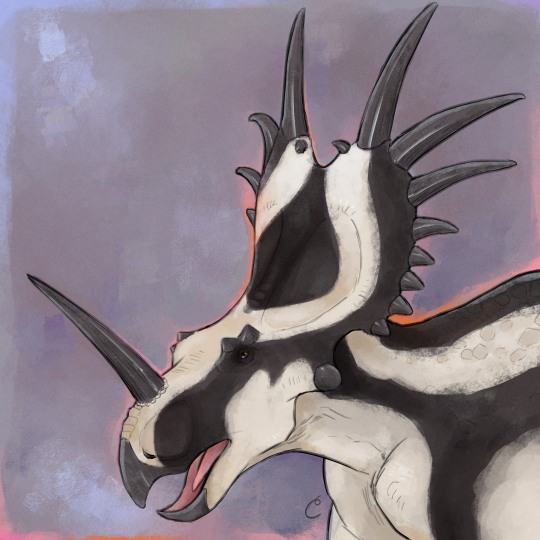
11/7/23 Styracosaurus // Possum
#dinosaur#my art#paleoart#dinovember#dinosaurs#dinovember2023#ceratopsian#species: styracosaurus#its a striped possum lol
466 notes
·
View notes
Note
I love how Paleo Pines just has "carnivore kibble" and it's never explained where it comes from and all the herbivores and carnivores just get along lol
Well carnivore kibble comes from the store where food is magically generated. Of course
#but yeah i also thought that when I've been playing#like wow this tyranno is so friendly. i literally have a parasaurlophus and styracosaurus with me#speaking of paleo pines it's actually helping me to remember more dino species!#i struggle with remembering quite a few of them but i remember them better now#answered asks#anonymous asks
3 notes
·
View notes
Note
Fuck it, I will name my dinos in homage to Dinosaur King, so I will have two trex, one named Rexy and needs to be female to reference Jurassic Park and the other- I need to search cuz has been a while since I watched Dinosaur King and I only remembef Chompy that in portuguese is named Gabu
there's no genders for dinos in paleo pines, neither there are for player to choose actually; they all go by they/them. who's to stop you from assigning them ones tho
#only dinos of npc and player's parasaurolophus have particular genders i think#names for my dinos are completely random#theres stacy the styracosaurus. archie the archaeopteryx. gal the gallimimus#ankle the ankylosaurus. also one styraco named styrta sie pali for polish reference#other ankylo is named raspberry due to the color. Spikey the kentrosaurus. valentine the pink utahraptor#the other one of my two archaeopteryxes is called Tiniest man alive. and coelophysis named Long boi#peach psittacosaurus named Princess#also another psittaco named Psikus (prank in polish) as one of dinos whose name is inspired by the first part of their species name#so yeah lol#cloud has been asked#me googling black cat names for melanistic euoplocephalus because i want to keep the title of Toothless for melanistic ankylo#btw that's what i also like highlighting. no gender choice thus no clothing sets limited to one gender so players can do whatever they want#Paleo Pines rambling
10 notes
·
View notes
Text
Can’t wait to see what I don’t finish next year!

#art summery 2022#my art#digital art#creature design#dinosaur#palaeoblr#spec evo#alien#alien design#original alien species#dinopocalypse#styracosaurus#lambeosaurus#baryonyx#quetzalcoatlus#deinocheirus#gigantoraptor#oviraptor#oviraptorid#citipati#postosuchus#carnotaurus#parasaur#parasaurolophus#dilophosaurus#pokemon#fakemon#fan pokemon#artists on tumblr
20 notes
·
View notes
Text

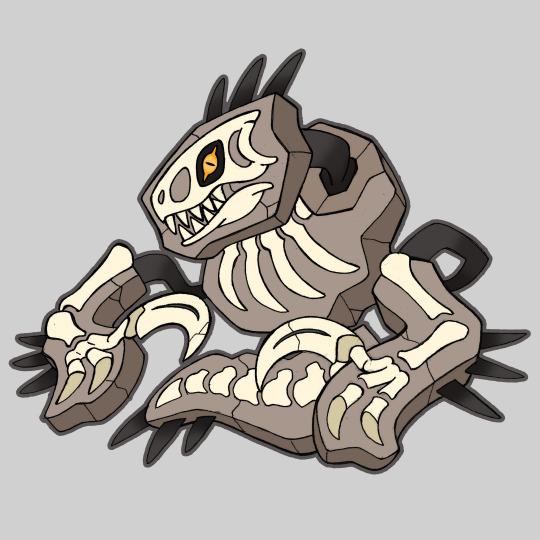

Fossil YAMASK (Ghost/Rock) & Fossil DWEBBLE (Dragon/Rock)
This two pokemon has made their home in a vast ravine rich in fossils, the constant interaction with the fossilized remains eventually caused some changes in their physical appearence as well as behaviour.
Fossil YAMASK carries the fossilized claw of an ancient raptor like predator.By doing so this pokemon has been able to channel this predators spirit from the afterlife. Thanks to his the pokemon has started to look more like such creature, featuing feather like spikes and claw like fingers. It brandishes the Claw as a weapon and uses it to fight.
Fossil DWEBBLE has made its rocky shell using a piece of bedrock that contains the skull of an ancient ceratopsid. Somehow having such remains constantly on them has affected them on a genetic level, making them tougher and more aggresive, choosing to fight head on instead of hiding inside their shells.
This pokemon evolve by leveling up inside of the ravine into DEINORYGUS (Ghost/Rock) & STYRACRUST (Dragon/Rock)
DEINORYGUS (from Deinonychus) now posseses the fossilized remains of the original predator from wich the original claw came, still embeded in stone. Despite its looks it can move with incredible speed, and having freed the fossil's sickle like claws from the rock, it uses them to slice its opponets with ferocity.
STYRACRUST (from Styracosaurus) now carries a fully developed ceratopsian skull on top of its rocky shell. Its body now has changed to become as tough as the skull with sets of armored horns that can be used for both defense and attack. It uses the large horns of the skull to fend of predators as well as compete with other members of its species for territory.
#pokemon#fake pokemon#fakemon#yamask#runerigus#dwebble#crustle#deinonychus#styracosaurus#fossil#fossil pokemon#fossils#regional form#regional evolution
7K notes
·
View notes
Text
Lokiceratops rangiformis Loewen et al., 2024 (new genus and species)
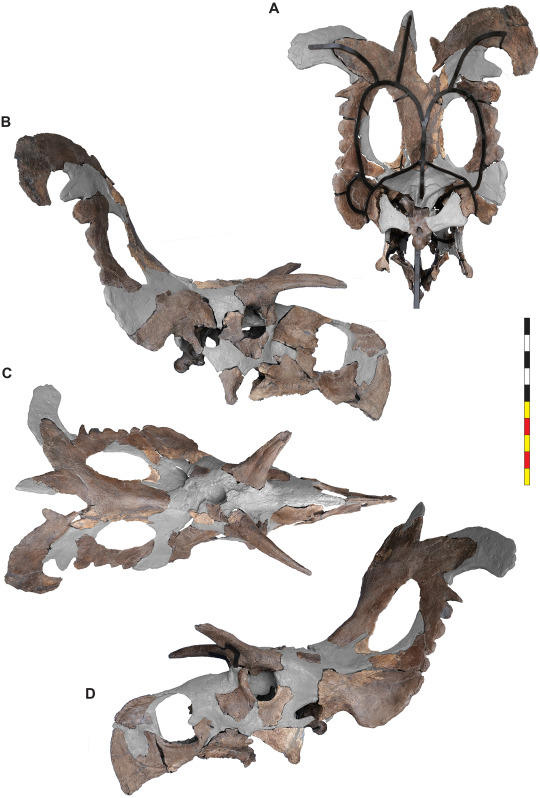
(Reconstructed skull of Lokiceratops rangiformis [scale bar = 1 m], with unpreserved portions in gray, from Loewen et al., 2024)
Meaning of name: Lokiceratops = [Norse deity] Loki's horned face [in Greek]; rangiformis = Rangifer [genus of the extant reindeer]-shaped [in Latin]
Age: Late Cretaceous (Campanian), roughly 78.1 million years ago
Where found: Judith River Formation, Montana, U.S.A.
How much is known: Partial skeleton of one individual, including a partial skull, several vertebrae, and some limb bones.
Notes: Lokiceratops was a centrosaurine cereratopsian, making it a horned dinosaur more closely related to Styracosaurus and Pachyrhinosaurus than to Triceratops. It is one of the largest known centrosaurines, with its skull alone being nearly 2 m long.
The skull of Lokiceratops was highly distinctive. A pair of very large, curved horns at the back of its frill pointed out to the sides. Furthermore, a pair of smaller horns closer to the center of the frill was asymmetrical, with one horn being larger than the other. Asymmetrical head ornamentation is also seen in the antlers of reindeer, hence the species name "rangiformis".
Lokiceratops is known from approximately the same time and location as three other centrosaurines, Albertaceratops, Medusaceratops, and Wendiceratops. Despite their diversity, all centrosaurines discovered so far are only known from very narrow ranges in both time and space. This may suggest that these horned dinosaurs diversified rapidly into numerous forms differentiated primarily by display features such as the shape of their horns and frills, with each species lasting only a short time in a small geographic region before evolving into new species or going extinct.
Reference: Loewen, M.A., J.J.W. Sertich, S. Sampson, J.K. O’Connor, S. Carpenter, B. Sisson, A. Øhlenschlæger, A.A. Farke, P.J. Makovicky, N. Longrich, and D.C. Evans. 2024. Lokiceratops rangiformis gen. et sp. nov. (Ceratopsidae: Centrosaurinae) from the Campanian Judith River Formation of Montana reveals rapid regional radiations and extreme endemism within centrosaurine dinosaurs. PeerJ 12: e17224. doi: 10.7717/peerj.17224
419 notes
·
View notes
Text
Archovember 2024 Day 3 - Gorgosaurus libratus
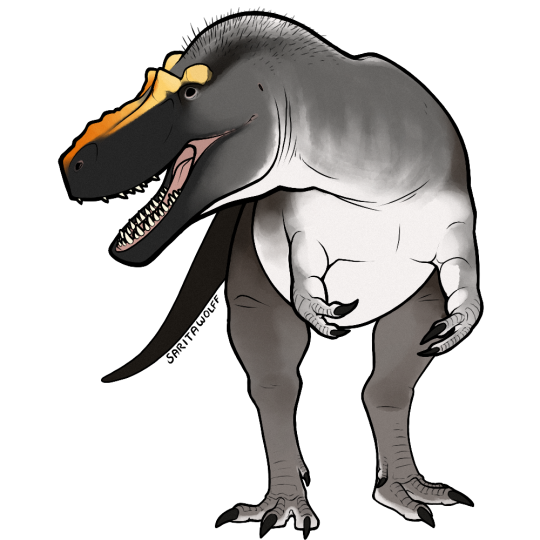
The apex predator of Western North America during the Late Cretaceous was Gorgosaurus libratus. Found so far in Alberta, Canada and Montana, USA, it lived several million years before Tyrannosaurus rex would appear. While it was a tyrannosaurid, it was more closely related to Albertosaurus, so much so that some scientists consider it to be another species of Albertosaurus. Gorgosaurus is the most numerous tyrannosaurid in the fossil record, known from dozens of specimens. This abundance of fossils has allowed paleontologists to investigate Gorgosaurus’ ontogeny, life history and many other aspects of its biology. For example, in 2023, a 5-7 year old juvenile Gorgosaurus was discovered with stomach contents consisting of two intact Citipes juveniles about a year old. This showed that younger Gorgosaurus’ were mostly eating prey much smaller than them, and were probably not hunting in packs, as the meal would not have been large enough to share. That being said, only the remains of the hindlimbs and caudal vertebrae of the juvenile Citipes were present, suggesting that this Gorgosaurus may have had a preference for the muscular hindlimbs. Many Gorgosaurus specimens also preserve evidence of facial scars, a result of intraspecies facebiting.
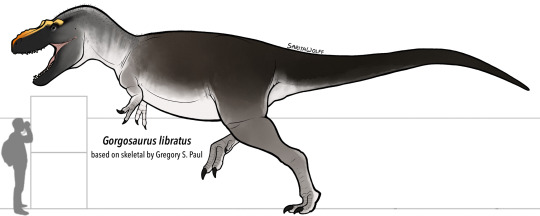
Gorgosaurus would have lived on the coastal plain along the western edge of the Western Interior Seaway, an inland sea which divided North America in half during the Late Cretaceous. The area was subtropical with periods of drought. Conifers would have dominated the forests, while the underbrush consisted of ferns, tree ferns and angiosperms. Gorgosaurus is best known from the Dinosaur Park Formation. Here, it would have lived alongside another apex predator: Daspletosaurus wilsoni. While these tyrannosaurids were roughly the same size, they may have preferred different types of prey, allowing them to coexist without too much competition. And there was a wide diversity of prey here, from many of the most famous ornithopods like Parasaurolophus walkeri, Corythosaurus casuarius, Gryposaurus notabilis, and Lambeosaurus lambei, to beloved ceratopsians like Styracosaurus albertensis, Centrosaurus apertus, Chasmosaurus belli, Spinops sternbergorum, and Vagaceratops irvinensis. There were also ankylosaurs like Anodontosaurus inceptus, Dyoplosaurus acutosquameus, Edmontonia rugosidens, Euoplocephalus tutus, Panoplosaurus mirus, Platypelta coombsi, and Scolosaurus. Pachycephalosaurids included Foraminacephale and Stegoceras validum. Gorgosaurus also shared space with other, smaller theropods, like the ornithomimids Ornithomimus and Rativates, caenagnathids like Caenagnathus, Chirostenotes, and Citipes, dromaeosaurids like Dromaeosaurus and Saurornitholestes, and troodontids like Latenivenatrix and Stenonychosaurus. Dinosaurs were not the only animals here, and Gorgosaurus would have also had to share space with the giant azhdarchid pterosaur Cryodrakon, as well as alligatoroids like Albertochampsa and Leidyosuchus, and choristoderes like Champsosaurus. Gorgosaurus is also known from the Two Medicine Formation and Judith River Formation.
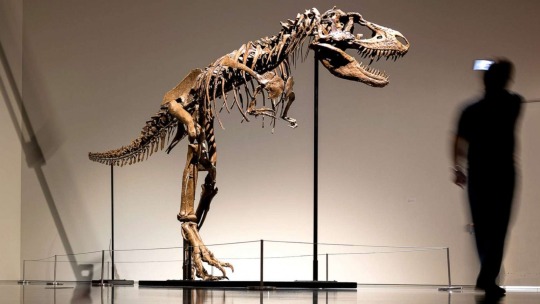
This art may be used for educational purposes, with credit, but please contact me first for permission before using my art. I would like to know where and how it is being used. If you don’t have something to add that was not already addressed in this caption, please do not repost this art. Thank you!
#Gorgosaurus libratus#Gorgosaurus#tyrannosaurids#theropods#saurischians#dinosaurs#archosaurs#archosauromorphs#reptiles#Archovember#Archovember2024#Dinovember#Dinovember2024#DrawDinovember#DrawDinovember2024#SaritaDrawsPalaeo#Late Cretaceous#Canada#USA#Dinosaur Park Formation#Two Medicine Formation#Judith River Formation
94 notes
·
View notes
Text













Process shots of my latest acrylic painting, as promised!
The next acrylic addition to my Cretaceous Alberta series is already under way (a pair of baby styracosaurus), but there will definitely be a ton of watercolours along the way :)
+ heading out to Drumheller to visit the Royal Tyrell Museum in a day for the 4th time (listen, it's the best museum ok?) and I'll be spending ~9 hrs there this time to draw the mounts. That'll def add a lot to my Cretaceous Alberta collection. Let me know if there's a specific species you'd like me to look out for to draw there :D
#art#dinosaur#paleoart#paleontology#artists on tumblr#acrylic painting#acrylic#painting#royal Tyrell museum#Dinosaur museum#my post#my art#Cretaceous Alberta
55 notes
·
View notes
Text
The Darkest Hour - Styracosaurs in a Wildfire Paleoart Process Breakdown

It’s been a long time since I’ve shared my art on this account (at some point years ago I just forgot to), but I thought that this might be a great opportunity to start posting my art again! This is my first attempt at paleoart, and I think it’s worthy of sharing. It’s for my showcase at my art school, so there were time restraints that stopped me from adding elements that I would’ve liked, but ultimately I’m quite satisfied with it.
For any budding paleoartist (or anybody really) who’d like to see my process, I put it all below the read more! @a-dinosaur-a-day (hope you don’t mind me @/ing you, i originally meant for this post to be an ask but it got too long haha)
I started off knowing that I wanted to depict some kind of ornithischian for a number of reasons. Two of the biggest reasons were that 1) I simply like them more than theropods and sauropods and 2) My senior showcase is all about showing animals in ways that the viewer hasn’t seen them before, and most people don’t really think about ornithischians except for if they’re being preyed on by a theropod.
I then narrowed my choices further by looking at different formations and what species they have. I looked up what formations parasaurolophus was in (since it’s one of my fav dinosaurs and I was thinking of making it my subject) and I saw the dinosaur park formation. Looking at the different species found there and the type of environment they lived in, I knew this formation was going to be my choice.
I couldn’t narrow it down to one species yet, so I decided to think of some scenarios ornithischians might find themselves in first. I thought, “Oooh, what about some dinosaurs escaping from a wildfire?”, since the storyline could easily be conveyed, the lighting would be interesting, and I could get creative with the composition (flames and burning debris can create arcs to guide the viewer’s eye).
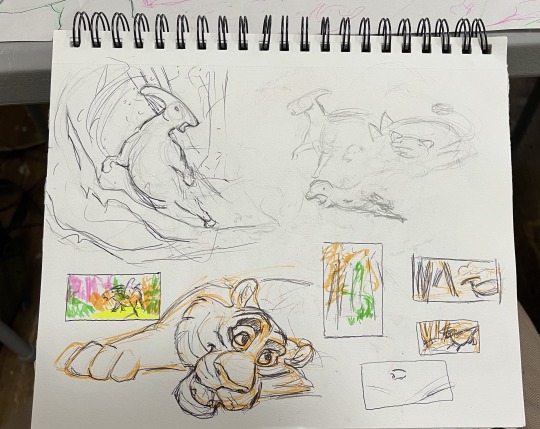
I did some very quick simple thumbnails and sketches to get the feeling and flow of the lines. I saw some paleoart by Marzio Mereggia and I remembered one of his parasaurolophus pieces that I really liked. I also looked at the composition of the fire scene from Spirit: Stallion of the Cimarron for inspiration. (the tiger doodle had nothing to do with it, i just wanted to draw a tiger) The shapes and silhouettes of these species weren’t really clicking for me, so I looked back on the list and saw styracosaurus. I looked at some paleoart and realized that the silhouette and shapes of their frill and horns could really draw the viewer’s attention.
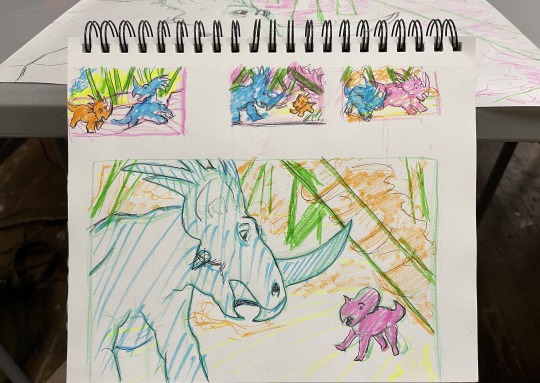
So, I drew the top thumbnails and showed them to my teacher. He liked all of them, but especially liked the middle one, so I drew a larger version of it, making sure to elevate the best parts and communicate the story. I like to use highlighters when thumb-nailing because it helps me break down the background, middleground, and foreground while also giving attention to the focal points. I was satisfied with this layout, so I drew an even larger version of it that would be the same size as the piece of wood I would be painting on.
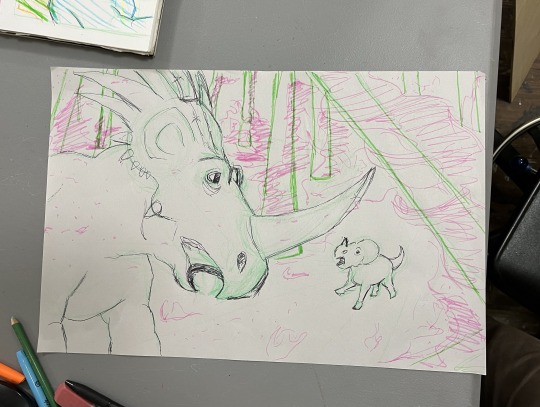
I wanted to add more dimension so I changed the placement a bit. I don’t have much to say on this one, except for the final project has less background detail because each piece in our showcase has to be finished within a certain amount of time, this is also why the adult styracosaurus doesn’t have scale detail. I would’ve liked to add it, but I have to be realistic with my time.
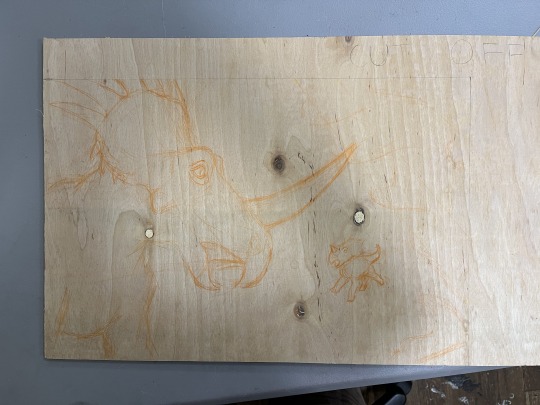
I then drew the sketch on the piece of wood, and then my teacher cut the excess wood off.
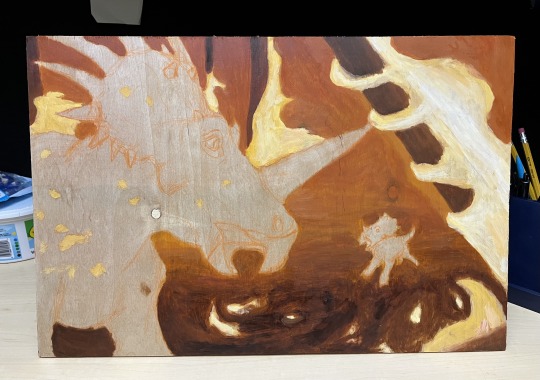
Painted the background and also changed the shape of the face horn to be more accurate. I believe that styracosaurus’ horns changed with age and each individual’s grew in their own slightly different way. I do regret not pushing the dark ground colors further back.
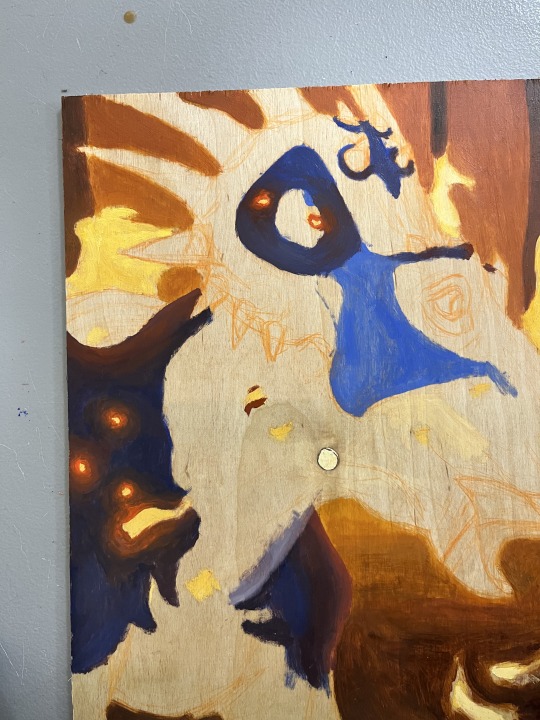
Started trying to figure out the colors in class here.

Did this all the next day, took about 6-7 hours. 3 during class and the rest in my dorm. I changed/added to the rest of the face colors later, but the beak stays the same. I still really like the way I painted the beak.
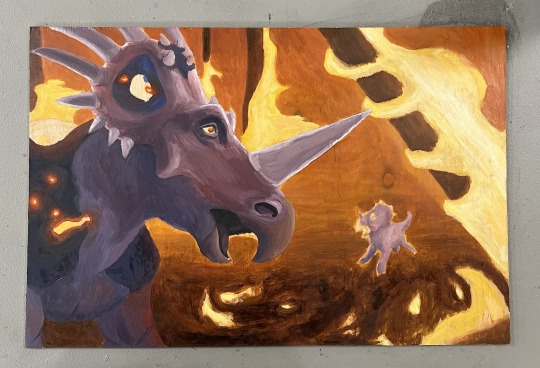
This was after 3 more hours of class time. I changed the face horn color and made the frill horns match it. I also started focusing more on highlights and shadows. This is the last photo I took during the process.

With the final version, you can see that I warmed up the highlights to match the fire and I dulled them out too (adding yellow to purple desaturates it). I also went over the background again, making the colors more vivid and adding a glow to the fire. Ngl I do regret not adding that glow to the fire on the trees, but oh well. Live and learn ig.
#styracosaurus#paleoart#cretaceous#late cretaceous#ceratopsian#ornithischians#dinosaur#dinosaur art#mesozoic#palaeoblr#paleoblr#paleontology#prehistoric animals#zoology#animal art#traditional art#oil painting#oil on wood#artists on tumblr#paleoartist#palaeoart#art process#artist#small artist#art on tumblr#illustration
36 notes
·
View notes
Text

Strange Symmetries #17: Spiky Surprise
Styracosaurus albertensis was a ceratopsid dinosaur living during the late Cretaceous about 75 million years ago, in what is now Alberta, Canada. Around 5m long (~16'), it was one of the most elaborately ornamented horned dinosaurs, with a long nose horn and multiple elongated spikes on its frill.
There was actually quite a lot of variation in the frills of Styracosaurus, with varying numbers of long spikes and extra hook-like projections present on some individuals. But one recently-discovered specimen nicknamed "Hannah" is especially surprising – it had a noticeable amount of asymmetry in its skull. The left and right sides show different numbers and arrangements of spikes, so much so that if the two halves had been discovered separately they might have been identified as belonging to two completely different species.
Frill arrangements are often used to define different ceratopsids, so if this level of individual variation and asymmetry existed in other species, too, then we may need to reevaluate some of them.
———
NixIllustration.com | Tumblr | Twitter | Patreon
#science illustration#strange symmetries#paleontology#paleoart#palaeoblr#styracosaurus#centrosaurinae#ceratopsid#ceratopsia#marginocephalia#ornithischia#dinosaur#art
491 notes
·
View notes
Text

Finally got the second shelf mounted so dino collection update! This doesn't include all the Jurassic Park/World figures, I decided I wanted to keep them separated.
Also, for fellow nerds, here's every species from left to right, as well as what line they're from
Bajadasaurus (CollectA), Diplodocus (CollectA), Miragaia (PNSO), Ouranosaurus (Haolonggood), Daxiatitan (CollectA), Gastonia (CollectA), Argentinosaurus (CollectA), Boreaopelta (CollectA), Mamenchisaurus (CollectA)
Carnotaurus (CollectA), Euoplocephalus (Haolonggood), Tianzhenosaurus (Haolonggood), Pentaceratops (Haolonggood), Styracosaurus (CollectA), Stegouros (CollectA)
20 notes
·
View notes
Photo

12/8/22 Styracosaurus
152 notes
·
View notes
Text
A Hundred Some New ATOM Kaiju Pt. 2
We're continuing our showcase of ATOM kaiju who've been lingering in my "to ink and color" pile for years, and yep, it's more retrosaurs. Listen, I have to draw big dinosaur monsters frequently to make life worth living, ok? We'll get to some non-retrosaurs in... part 5, probably.
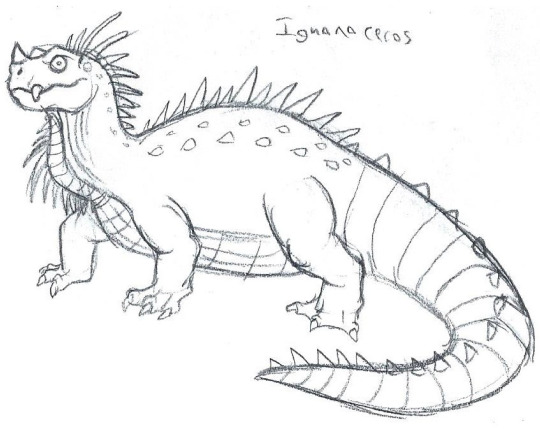
The last batch had a Crystal Palace Megalosaur-inspired kaiju in it, so we'll start this one with one inspired by the Crystal Palace Iguanodon.
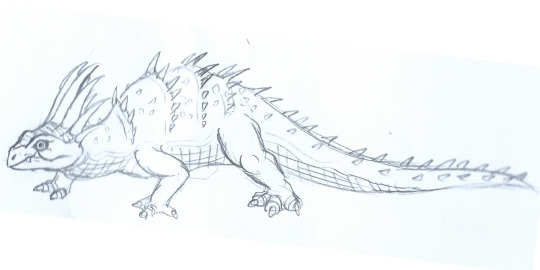
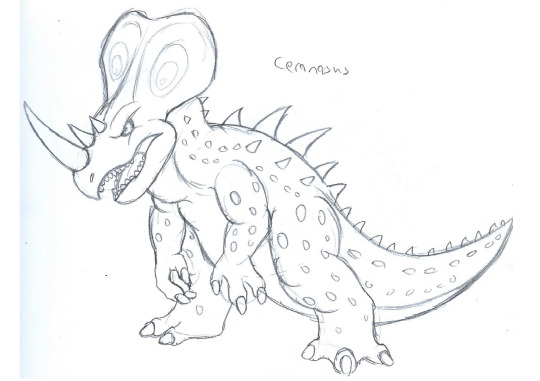
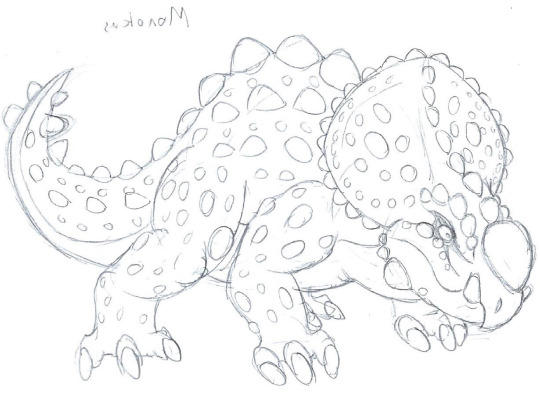
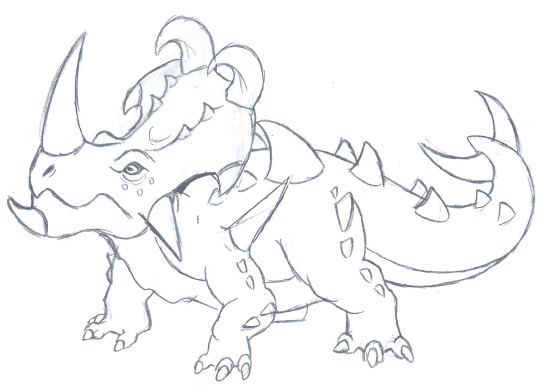

Next, some horned goliaths. The first is inspired by a very old styracosaurus toy I found that really emphasized the "lizard" approach of retro dinosaur designs, looking like a bearded dragon with an elaborate crest more than an actual styracosaur. Our second is loosely inspired by Armadon from Primal Rage and Triceramon from Digimon, being my stab at what a bipedal ceratopsian monster would look like. The remaining three are me just trying to have fun with ceratopsians the way I do with theropods.
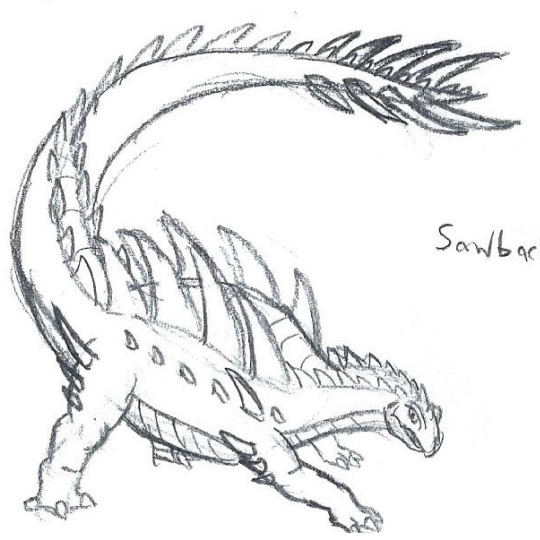

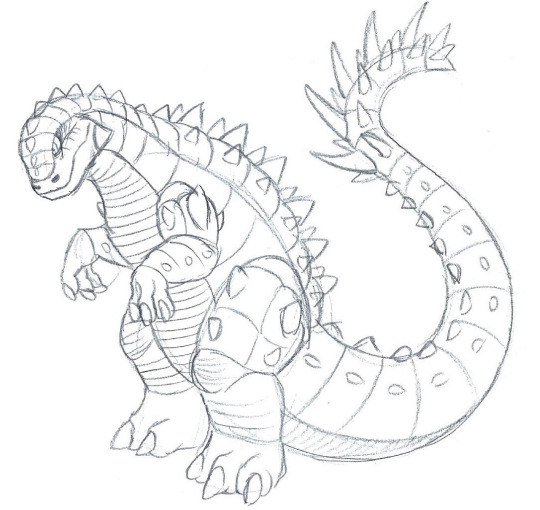
Stegronox was a fusion of stegosaur and ankylosaur traits in part to open up slots for more non-retrosaur kaiju in my cast of "core 50" kaiju for ATOM Volumes 1 and 2, so when working outside of those 50 I decided to do two retrosaur kaiju who focus on those two indvidually. The akylosaur's name is Ankylus, which is me being cheeky since that's basically what Anguirus's name would be if you translated it differently - they're both just "ankylosaurus" with a few less syllables. Then, for symmetry I suppose, I did an upright bipedal armored goliath to match the bipedal horned goliath, because "What if a four-legged creature stood on two legs" is a pretty easy way to make a monster feel distinct.
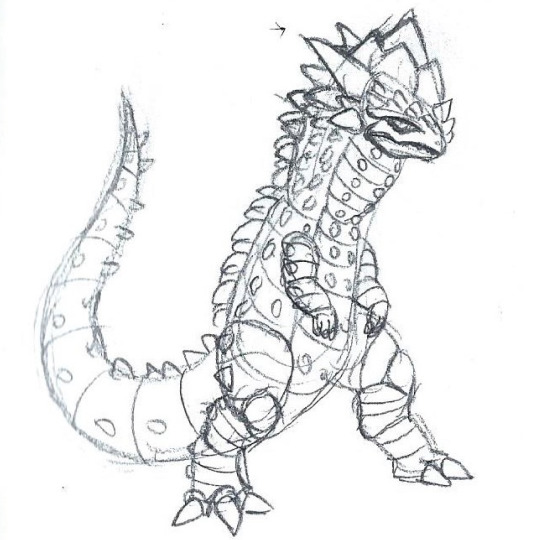

Like Stegronox, Pachydon was a combination of two different dinosaurs into one retrosaur to conserve slots in the core 50, and so I felt compelled to do two bonus retrosaur kaiju who took those two components and game them their proper due. We've got a helmeted goliath who takes the battering ram head reputation of pachycephalosaurs to a ludicous extreme, and a duckbill that particularly takes after Miasaura, which has always been my favorite hadrosaur.
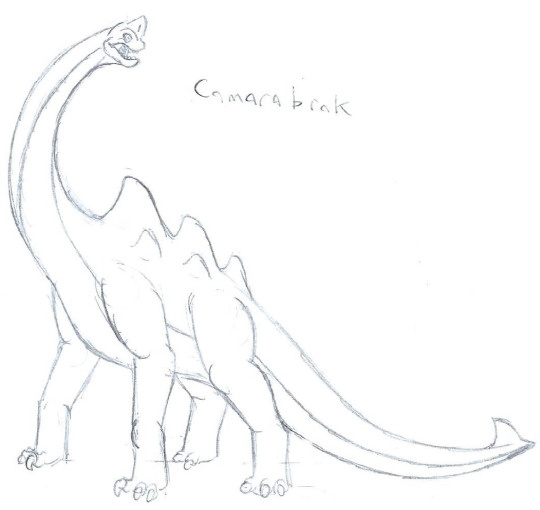
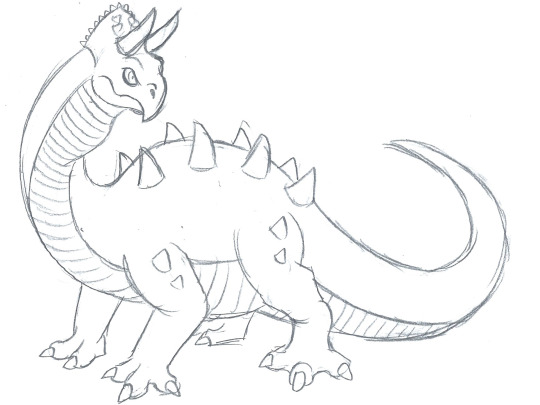
We'll close out this batch with some long-necked goliaths. The first, Camarabrak, is meant to be an equal to the other retrosaur kaiju, rather than an "immense even by kaiju standards" one like Bronton. Being bigger than big is, in my eyes, part of what makes Sauropods stand out in pop culture depictions of dinosaurs, which is why I made Bronton so tremendous compared to the others, but now that there's room for more sauropod monsters, we can have one that's in the same weight class as Tyrantis and pals.
The other long-necked goliath is Brontoceratops, which was inspired by a very early reconstruction of Triceratops (I think it may have even been by my ancestor, Edward Drinker Cope, but I can't find it anymore so who knows) that gave it a weirdly long neck. In ATOM canon, Brontoceratops's species does a sort of cuckoo-bird thing, putting their eggs in the nests of horned goliaths and letting them raise it. It'd feature in a story where Tricerak tries to find more of its kind and ends up adopting the baby Brontoceratops and raising it despite it not actually being a member of his kind.
31 notes
·
View notes
Text
Fictional Prehistoric Animals
Going over so many prehistoric monster movies, I've run into quite a few species that are just... not real. Sometimes, they are one-off oddities. Other times, they are regulars in the Prehistoric Pantheon. Now, there are animals whose history is convoluted and has changed multiple times. So, some are just misidentifications, but others are whole-cloth oddities.
Let's get it started!

Agathaumus - The "Wonderous Beast" of E.D. Cope, rendered in a beautiful painting by Charles R. Knight. This design first cropped up in The Lost World (1925), but it has cropped up -- in basically everything that uses The Lost World as source footage! It also crops up as basically "A Styracosaurus with brow horns" in a few other shows (Dinosaurs (1991), Dino Squad (2007)) and as homages (Evolution (1940) and Dinosaur (1980)). Indominous Rex - Would you believe that this thing has appeared after Jurassic World? At least 2 B-Movies (one from China) have them as 'real' dinosaurs!
Spitter - Ever since Jurassic Park, there's been an influx of making Dilophosaurus spit venom. This... was never the case, and we know even more now about it than we did then, so I call it a new organism entirely. The frill certainly helps in that regard! Rhedosaurus - The creation of Ray Harryhausen for The Beast from 20,000 Fathoms. This animal later got homages in When Dinosaurs Ruled the Earth and Planet of Dinosaurs. When THAT film fell into the Public Domain, 6 other films used clips and many brought in the Rhedosaurus vicariously. Stegoceratops - A Triceratops with stegosaurus plates down its back. It isn't just some Jurassic World Hybrid! It first showed up in Yor: Hunter From the Future. Slurpasaurus - Lizards in Makeup! The classic! However, I find myself at a crossroads with it as well. This is because only sometimes the animals are identified. Be it the Rhinocerosz Iguana masquerading as a Dimetrodon in Journey to the Center of the Earth or a Nile Monitor acting as a Stegosaurus in The Land Unknown. But other times we see an animal and it's just not given a name! It's annoying! I mean, what is a photographically enlarged Anolis supposed to be? How about a Coati? An Armadillo with Rubber Hornes? A Rhinocerous Iguana? A Green Iguana? Arentine Tegu? Alligator? Spectacled Caiman? Leopard Gecko? I mean, Honestly?!
#Dinosaurs#Paleoart#Paleomedia#Paleo Art#Prehistoric#Paleontologuy#Media#Media Analysis#Posted Early by mistake
6 notes
·
View notes
Text
Gameplay Trailer!
The Paleo Pines demo is available to play on Steam now for the Next Fest
Welcome to the beautiful and mysterious island of Paleo Pines! Where friendly dinosaurs roam free, and townsfolk love their small town gossip and supportive community.
Let's start by customising our character anyway we like with a variety of skin tones, unique hairstyles, and clothing options. We'll be able to change outfits later on, as we add to our wardrobe.
Lucky is our best mate. We grew up together- ever since she was in an egg. Together, we arrive on the island and find ourselves with a ranch home which is run down and in desperate need of repair. Just across the valley is the town of Pebble Plaza, where we can meet our first wacky neighbours. Granny Agami can be sassy, but underneath that tough exterior she's an old softie. She gives us our very first quest to help us start our farm.
Farming new crops on our ranch is a core gameplay mechanic, as we need to have a store of tasty treats to help us befriend new dinos, and create new recipes that can help give us more stamina later on. We can also trade produce at the market for other items we need.
Completing quests can help us gather special rewards and contribute to in-game events. The townsfolk might also give us extra tips to guide our exploration! As we explore, we can also forage for other useful items.
Next, let's venture into Veridian Valley and find ourselves a new dino to befriend!
We've discovered a herd of Styracosaurus! Each dinosaur species has a unique friend call. When we play the song on our flute, their curiosity is piqued and they start to come closer. Then, we can offer them a tasty treat to gain their trust. Some dinos can be picky, so it's important to have a variety of treats on-hand.
Phew! They love their treat. Let's give our new dino pal a name.
The styracosaurus now trusts us, and will follow us back to the ranch. Once a new friend joins our ranch, it's important to take care of them, and keep them happy. Otherwise, they might decide to head back to the Valley. First, let's build Ivy a pen and give her a dreamstone to sleep by.
When we level up our friendships with Dinos, we can unlock new helper abilities for the ranch. The Styracosaurus can help us till the soil, to create new crop plots in double time! Other dinos can farm too, the spunky Gallimimus loves to water, while smaller helpers like the Coelophysis will harvest crops or track plants and berries in the wild.
Your dino friends can come with you on your adventures as well. Some have special abilities to unlock new areas of the map to explore- looks like Ivy helped us to complete another quest!
As we get to know more townsfolk, we learn that Lucky is special. Her kind hasn't been seen in ages. We decide to get to the bottom of this mystery and set off on a quest to find the missing Parasaurolophus.
As we continue to explore the island in search of Lucky's kind, we also just might come across some rare dinos in unique conditions. It was tempting to stay indoors with this [rainy] weather, but now we have found the illusive stormy gallimimus.
Continue the story for yourself as you fix up your ranch, grow your farm, and build your cozy dino sanctuary.
#paleo pines#paleopines#indie games#dinosaur#indie dev#paleoblr#paleomedia#pc games#dinosaurs#farming simulator
78 notes
·
View notes
Text
Furcatoceratops elucidans Ishikawa et al., 2023 (new genus and species)
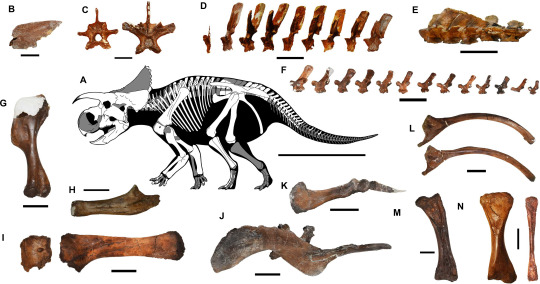
(Schematic skeletal and select bones of Furcatoceratops elucidans [scale bars = 1 m for the skeletal and 10 cm for individual bones], with preserved bones in white, from Ishikawa et al., 2023)
Meaning of name: Furcatoceratops = forked [in Latin] horned face [in Greek]; elucidans = elucidating [in Latin]
Age: Late Cretaceous (Campanian), between 75.2–76.3 million years ago
Where found: Judith River Formation, Montana, U.S.A.
How much is known: Nearly complete skeleton of one individual.
Notes: Furcatoceratops was a centrosaurine ceratopsian, making it a horned dinosaur more closely related to Styracosaurus and Pachyrhinosaurus than to Triceratops. It appears to have been especially closely related to Nasutoceratops, which lived at around the same time in what is now Utah. Whereas Nasutoceratops had distinctive brow horns that curved out to the sides, however, the brow horns of Furcatoceratops pointed almost straight ahead.
The degree of fusion among the skull bones in the type specimen of Furcatoceratops as well as microscopic examination of its bone structure indicate that it was not fully mature when it died, and may have been around 2–3 years old. However, it was already close in size to some adult individuals of closely related ceratopsians.
Historically, research on ceratopsians has focused heavily on their skulls, with less attention paid to the rest of their skeleton. Given its highly complete preservation, the type specimen of Furcatoceratops will likely be valuable for understanding these neglected portions of ceratopsian anatomy.
Reference: Ishikawa, H., T. Tsuihiji, and M. Manabe. 2023. Furcatoceratops elucidans, a new centrosaurine (Ornithischia: Ceratopsidae) from the upper Campanian Judith River Formation, Montana, USA. Cretaceous Research advance online publication. doi: 10.1016/j.cretres.2023.105660
106 notes
·
View notes